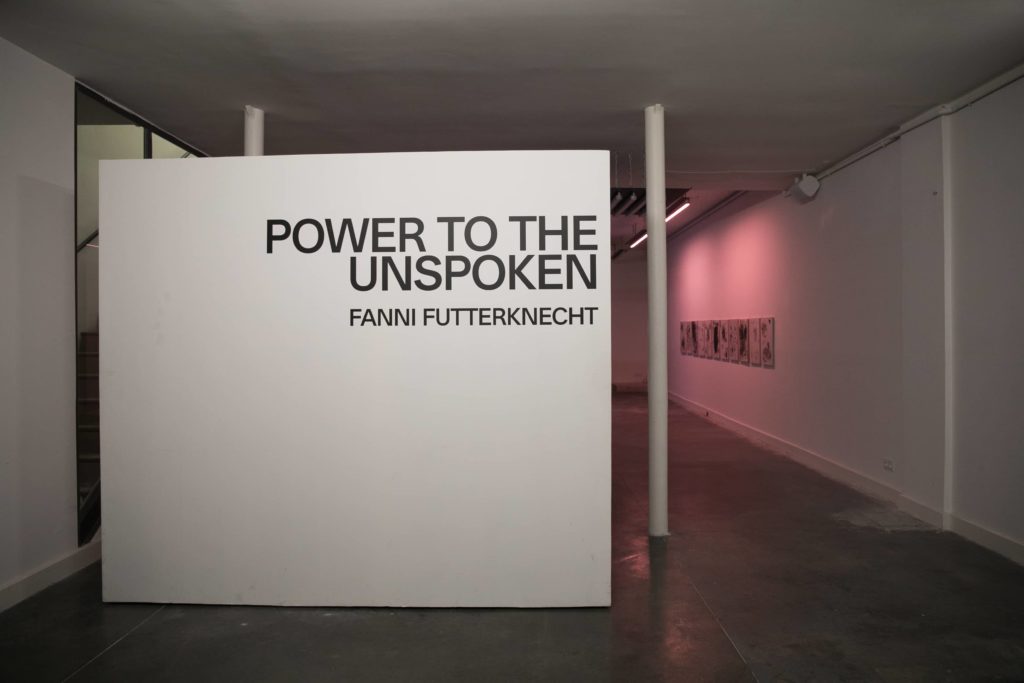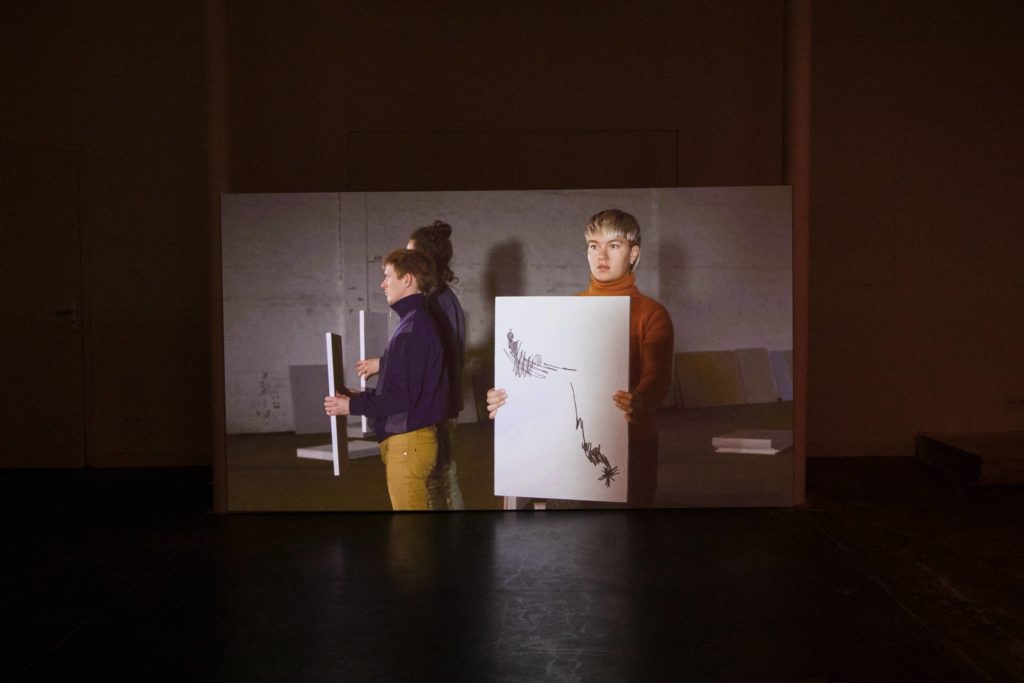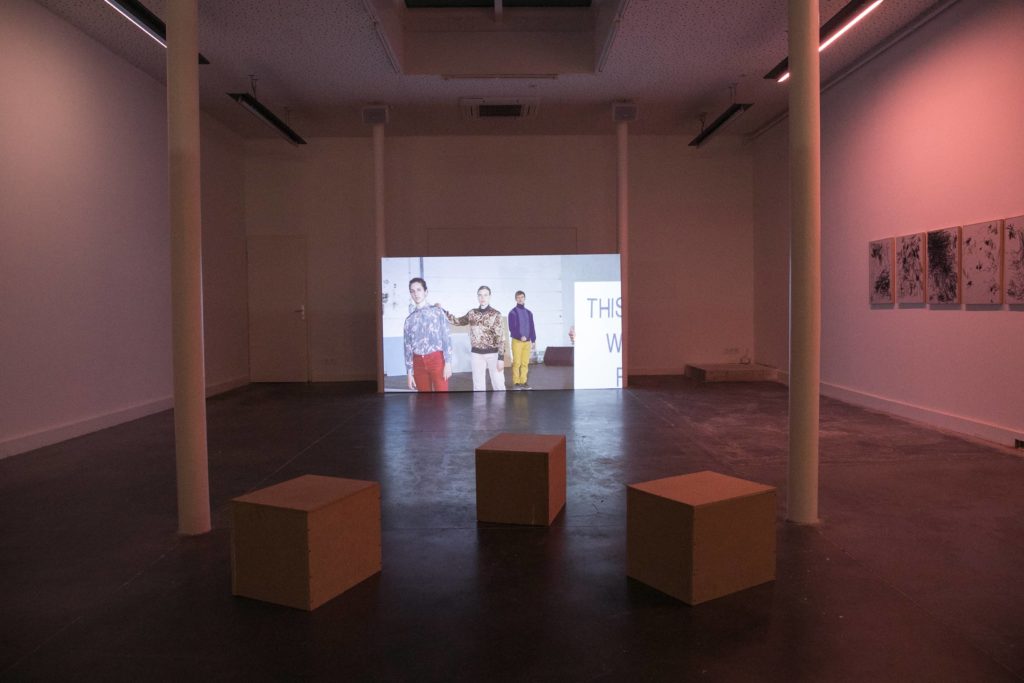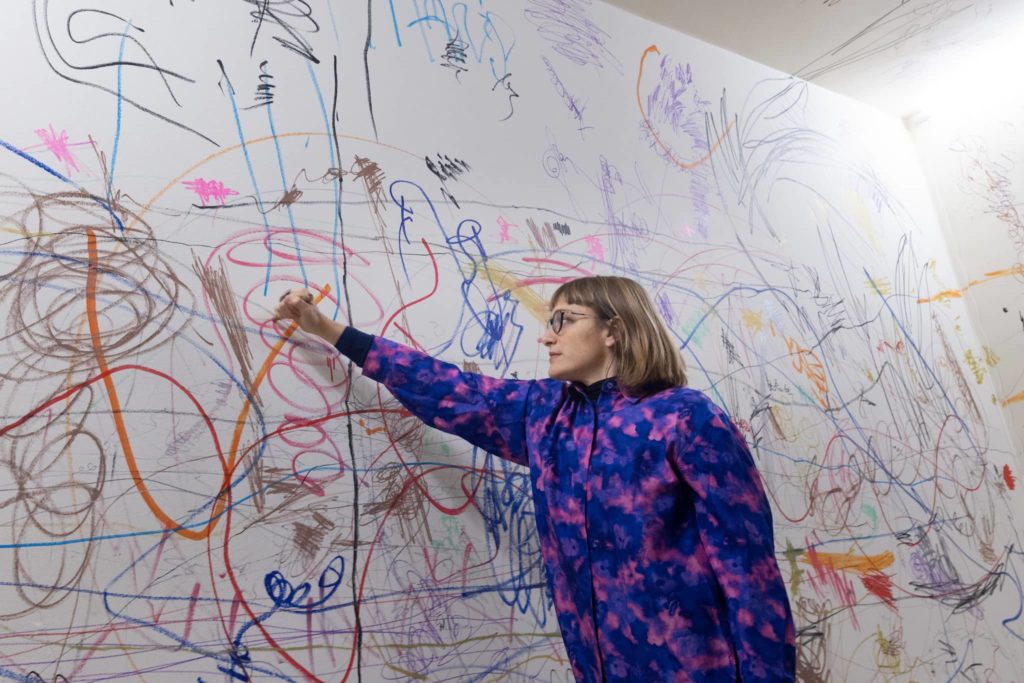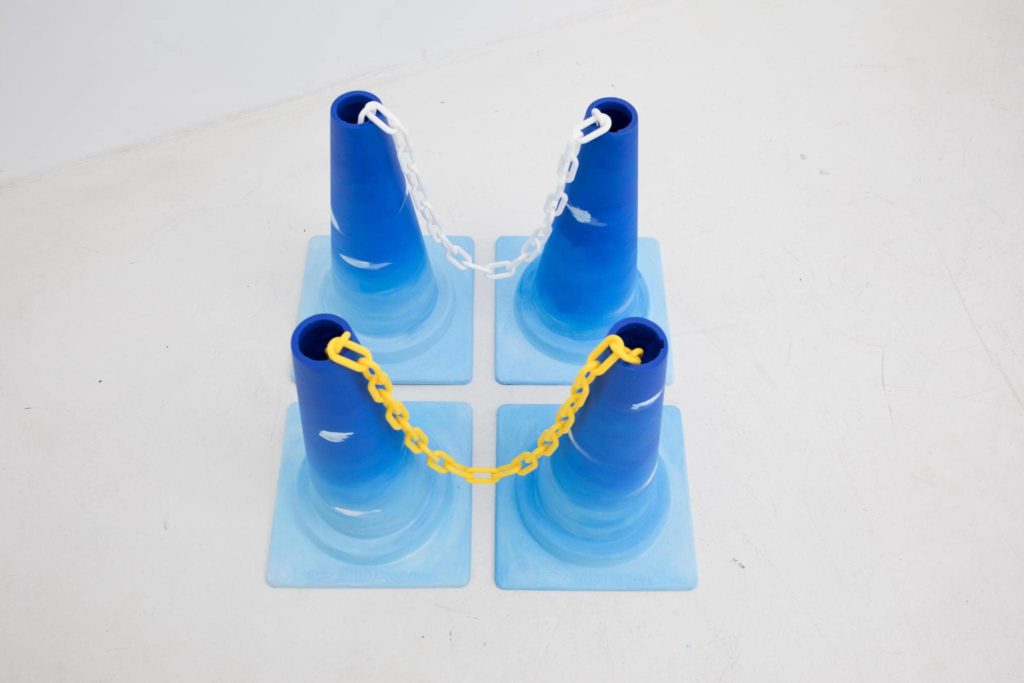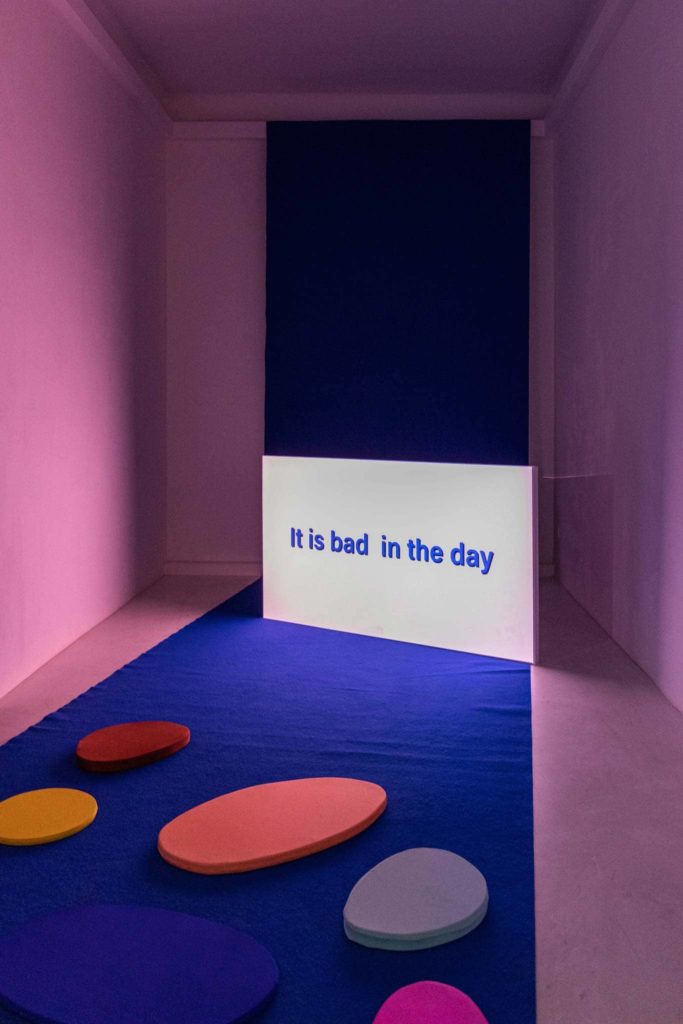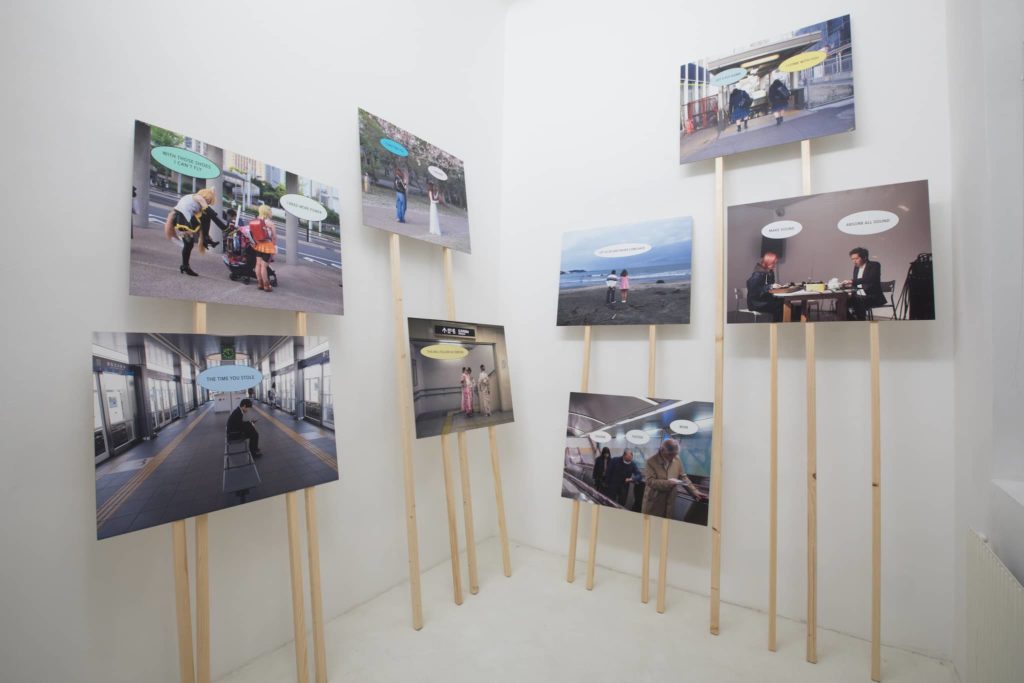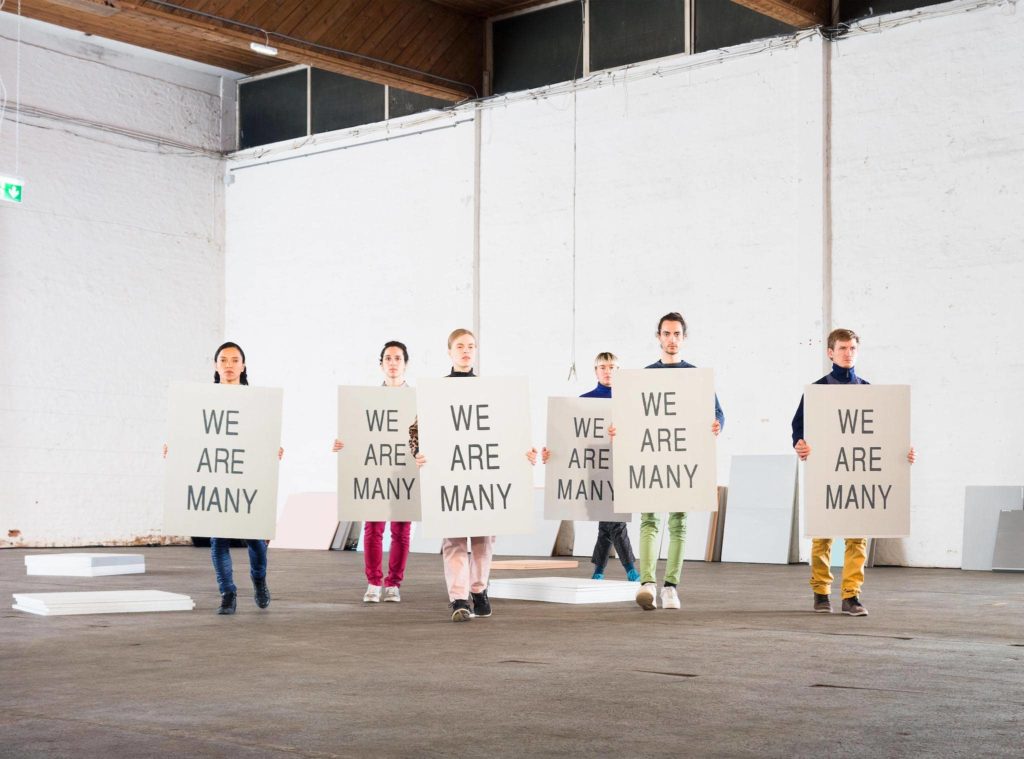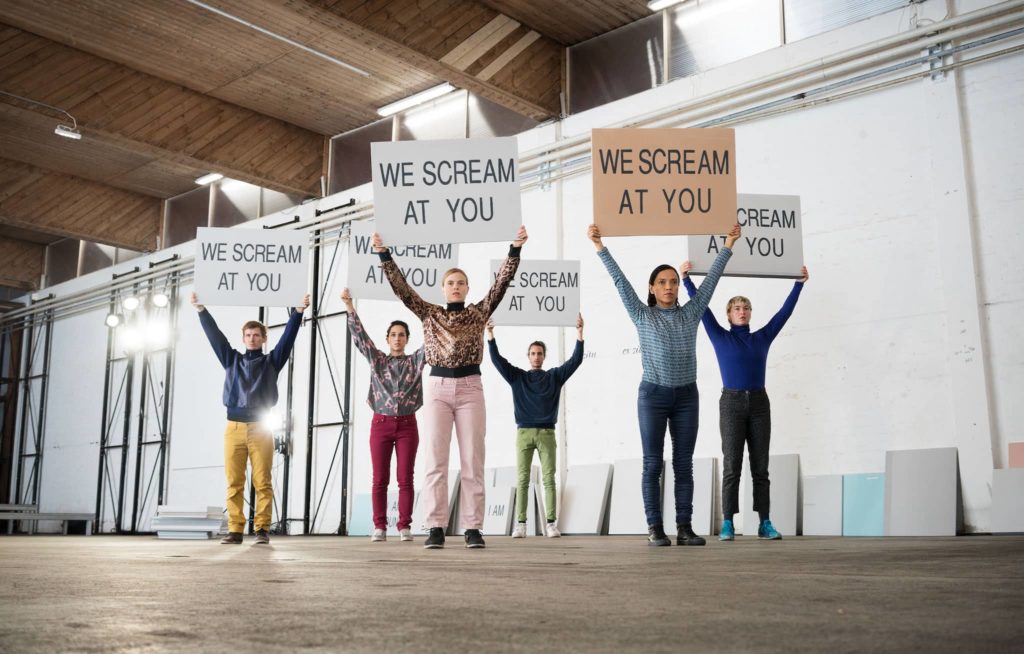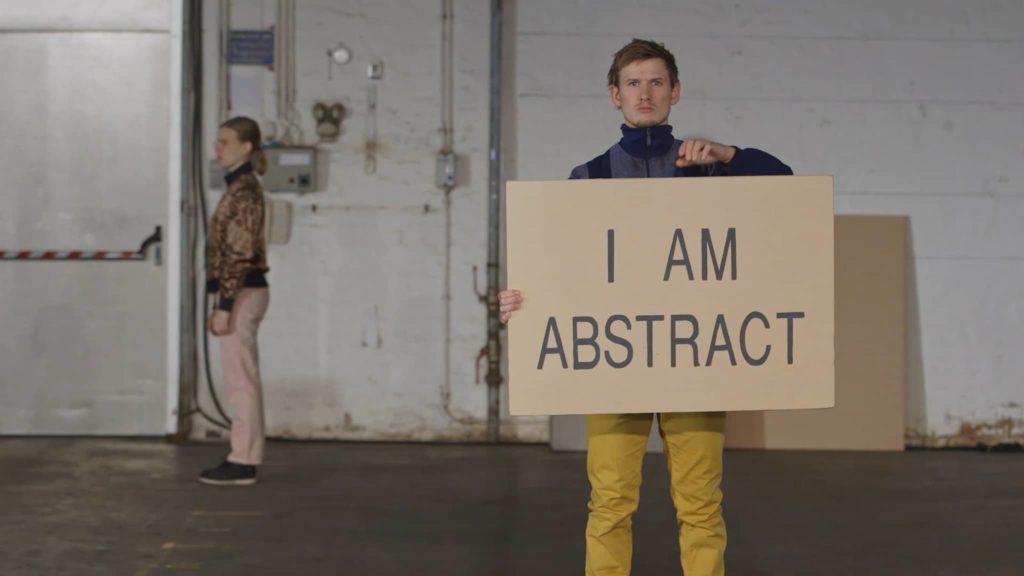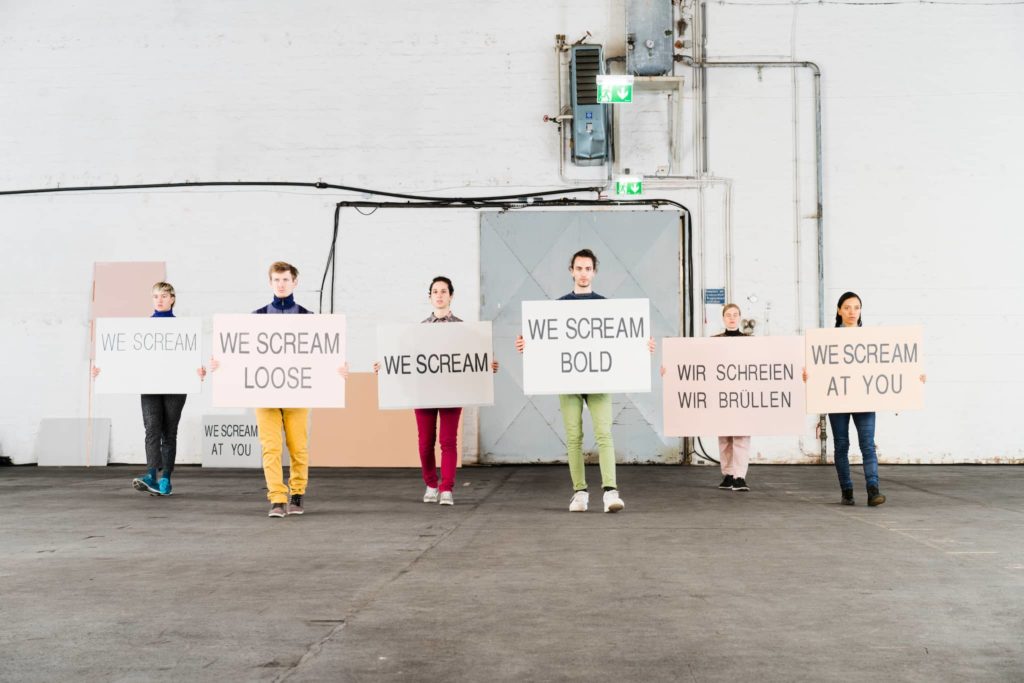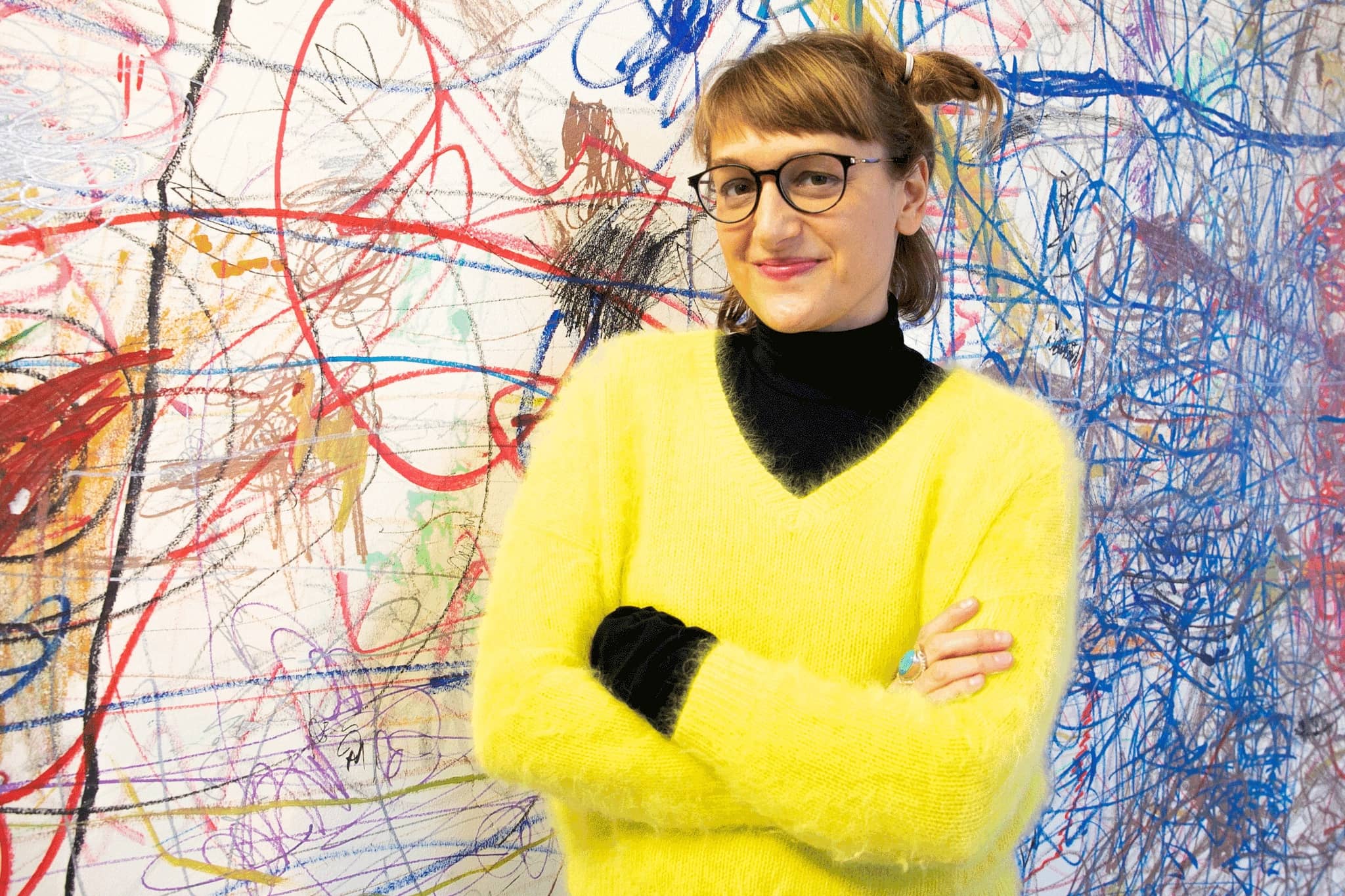
Fanni Futterknecht, b. 1979, Vienna, Austria.
Her artistic work adopts a position that spans media, ranging between video, performance and installation. In her works she reflects on sociological and social questions, converting them into poetic interpretations. In spatial and plastic translations, and by means of language, the artist works on the construction and deconstruction of scenarios and the questioning of the media employed.
As of January 2022
This exhibition is showcasing recent works of Fanni Futterknecht exploring the relation between writing, speaking, and drawing. Engaging with social concepts such as the “I” and the “We” and their interaction, it deals with questions concerning the rhetoric of protests and demonstrations. The video documentary work “We will not let you go”, explores the subject constructions within our European society and depicts both moments of perceived commonality and the isolation of the individual. The focal questions of the project are the visualization of intra-lingual and hierarchical power structures, dynamics, and modes of expression as well as the symbolic appropriation of space and social control.
In addition to this, the artist is also showcasing a series of drawings that Futterknecht created in an attempt to transcribe/translate certain terms into abstract and poetic scribbles. The exhibition aims to set a starting point for Fanni’s residency at Soma and her upcoming project researching the expression and communication of written and non-verbal language.
In her solo exhibition, Everyday Heroes, Fanni Futterknecht reflects the role of virtuality, as an “ideal“ reality and a growing substitute for everyday life as perceived within Japanese Society. By combining daily sceneries, routines, and functions put into relation to a fictional imaginary space of mind inspired by Anime narratives, the exhibition will be showcasing her recent photo, video as well as installation works produced during her stay in Tokyo.
Futterknecht’s interest is in exploring an alternative interior world where people can feel closer and more secure than reality, especially within contemporary Japanese culture and society. She has employed archetypes and abstraction in her previous works, which also commonly applied to Japanese visual communication including anime and manga. From that Futterknecht was drawn into the visual and cultural aesthetics in Tokyo after she experienced at first hand a large number of advertisements and tropes distributed through the public space, which employed visual characters of anime and manga. She has taken her interests in these representations of anime and manga, distributed as they are throughout Japan, rather than the art forms in themselves. After researching and exploring the world of the “Otaku“ scene around the representations, the artist investigates how people inhabit different imaginations in everyday life while performing their social norms. Those worlds imagined by the artist are not merely projected to everyday life in Japan, but intimate a wider significance, encompassing the myriad of visual images in advertisements, propaganda, and rebellion movement around the world.
In the performance WE WILL NOT LET YOU GO, artist Fanni Futterknecht stages tableau-like situations and performative visual moments together with a group of performers in the Nordbahn-Halle. These sequences and pictures are based primarily on media images of protests, demonstrations, and manifestations. By using graphic text fragments and minimalist performative actions, Futterknecht and her performers abstract these ideological moments and transfer them into choreographed poetic scenes, formed by moving, standing, or lying bodies in the space.
WE WILL NOT LET YOU GO explores the subject constructions within our European society and depicts both moments of perceived commonality and the isolation of the individual. The focal questions of the project are the visualisation of intralingual and group hierarchical power structures, dynamics, and modes of expression as well as the symbolic appropriation of space and social control. Holding up plates and signs, the performers repeatedly form new groups of “soundless speakers”, inviting the observers to listen to their own voices and thereby become readers.
